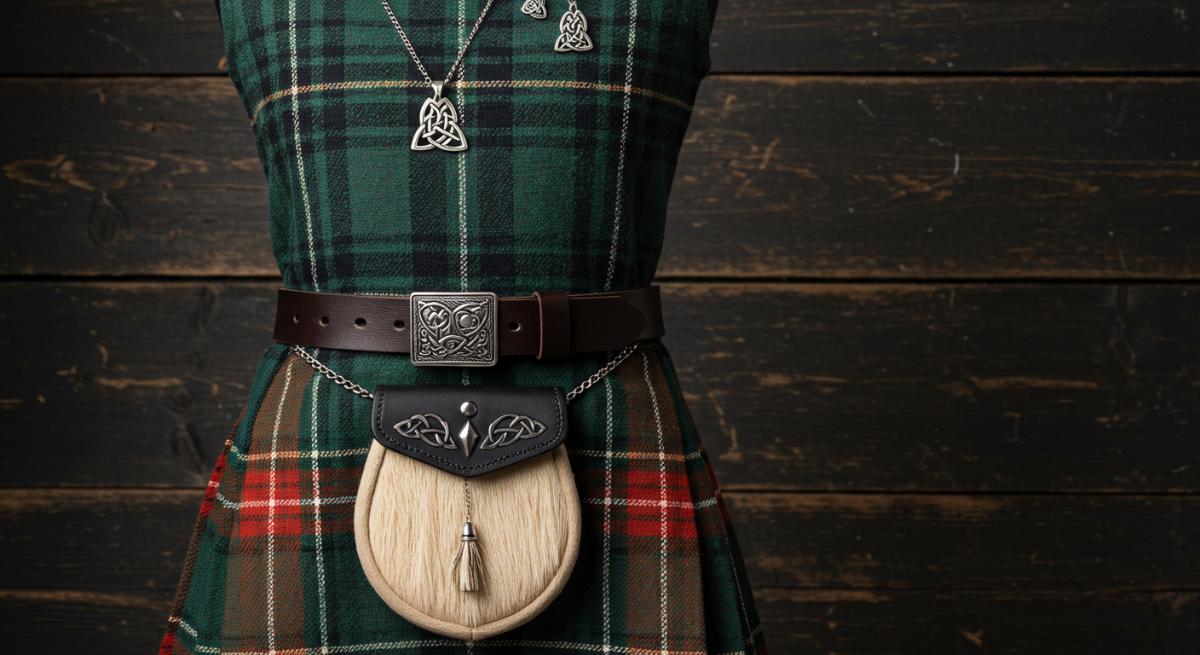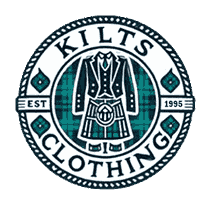The History and Heritage of the Irish Kilt for Women

The Irish kilt, a symbol of culture, pride, and history, has long been associated with the men of Ireland. Still, over time, this traditional garment has also evolved into a powerful and stylish statement for women. Today, the Irish kilts for women is a blend of tradition and modern fashion, reflecting heritage and personal style. But how did the kilt, initially designed for men, make its way into women's wardrobes? Let's dive into the history and cultural significance of the Irish kilt for women, exploring its origins, evolution, and the way it has become a statement of identity in modern times.
The Origins of the Irish Kilt
The Irish people trace the origins of the Irish kilt back to ancient Celtic times. Men initially wore this traditional garment as a practical piece of clothing suited for the rugged terrain of Ireland. They often made the original kilt from woolen fabric and designed it as a long, draped piece of cloth that they wrapped around their bodies and fastened at the waist. This design allowed for freedom of movement, essential for the various outdoor tasks that Irish men would engage in, such as farming, hunting, and battle.
The kilt, like many Celtic garments, featured distinctive patterns and colors. The most notable design elements were the plaid or tartan patterns representing different Irish clans and families. Each pattern was unique to the clan, making the kilt a functional garment and a powerful symbol of identity and pride.
Over time, the design of the kilt evolved. By the 16th and 17th centuries, the kilt became more tailored, taking on the familiar pleated look we recognize today. However, it remained a primarily male garment worn by Irish men to symbolize their connection to their roots and heritage.
The Shift Towards Women's Kilts
Although the kilt was traditionally a male garment, women in Ireland began incorporating it into their wardrobes as early as the 19th century. Women's fashion began to change during this time, and there was a growing desire to incorporate more masculine elements into women's attire. The Victorian era saw a push for women to wear less restrictive and more practical clothing, and the kilt, with its loose-fitting design and free-flowing nature, provided a comfortable alternative to the tightly fitted dresses of the time.
As social and political movements gained momentum, particularly the rise of feminism and the pursuit of gender equality, women began to reclaim traditional male clothing, including the kilt. It was a period of significant change in women's fashion, where clothing became more than just a symbol of status—it became a way to express individual identity and strength. The kilt, once seen as a masculine garment, started to be embraced by women not just as a fashion statement but as a symbol of empowerment and cultural pride.
Key Differences Between Women's and Men's Irish Kilts
As women began to adopt the kilt, certain design elements were modified to create a more flattering and comfortable fit. One of the most noticeable differences between irish women's kilts and men's Irish kilts is the fit and tailoring. Women's kilts tend to be more form-fitting around the waist and hips, providing a more feminine silhouette. In contrast, men's kilts have a looser, more relaxed fit. This adjustment in tailoring allows the garment to suit a woman better while retaining the kilt's traditional look and feel.
The fabric used in women's kilts also tends to differ from that of men's kilts. While manufacturers often make men's kilts from heavier wool fabrics, they may use lighter-weight wool or a blend of fabrics for women's kilts, making them more suitable for different weather conditions and occasions. Women's kilts also often feature decorative elements such as lace, embroidery, or pleats that add a touch of elegance and style to the garment.
Another notable difference is the length of the kilt. While men's kilts are typically worn at knee length, women's kilts vary, ranging from mid-thigh to knee length or even longer. This variation allows women to customize the kilt to fit their personal style and comfort level, making it a versatile and adaptable garment.
The Cultural Significance of the Irish Kilt for Women
The cultural significance of the Irish kilt extends far beyond its design and function. For both men and women, the kilt is a powerful symbol of Irish heritage and pride. Like men's, women's kilts can represent a connection to one's roots, family, and clan. The tartan patterns associated with specific Irish clans are just as crucial for women as for men. Wearing a kilt with a particular tartan is a way of honoring one's ancestry and paying homage to the generations that came before.
Beyond its heritage, the Irish kilt has also come to represent a sense of empowerment and individuality for women. In recent years, the kilt has become a popular fashion choice, worn on special occasions and as an everyday garment that blends tradition with modern style. For many women, wearing a kilt is a way to embrace their cultural heritage while simultaneously asserting their identity in the world.
The Modern Revival of the Women’s Irish Kilt
The Irish kilt for women has seen a modern resurgence, blending its rich historical roots with contemporary fashion trends. Designers and fashion houses have reimagined the traditional kilt, creating modern iterations that women worldwide wear. Today, women's kilts come in various styles, from casual, everyday wear to more formal designs suitable for weddings or cultural celebrations.
One of the key reasons for the modern revival of the women's kilt is its versatility. While traditional kilts were primarily worn for formal occasions or cultural events, today's kilts can be dressed up or down, depending on the situation. Pairing a kilt with a simple blouse or casual jacket can create a chic, everyday look. Adding accessories like a belt, brooch, or sporran can elevate the outfit for more formal gatherings.
Where to Wear a Women's Irish Kilt Today
The Irish kilt for women is no longer limited to special occasions. While kilts are still widely worn for cultural events like St. Patrick's Day celebrations, festivals, or heritage gatherings, they have also become a popular choice for everyday wear. The key to styling a kilt for different occasions lies in its versatility.
Women often pair their kilts with simple tops, boots, or sneakers for casual wear, creating a relaxed yet stylish look. When dressing up for a formal event, the kilt can be paired with elegant blouses, heels, or tailored jackets to create a sophisticated ensemble. Kilts have also made their way into bridal fashion, with many women opting for kilts as a unique and meaningful option for their wedding day attire.
Conclusion
The history of the Irish kilt for women is a rich and evolving story, from its humble beginnings as a male garment to its rise as a symbol of empowerment, pride, and fashion. Today, the kilt represents a deep connection to Irish heritage and a way for women to express their individuality and embrace their roots in a modern, stylish way. Whether worn at a festival, a wedding, or as part of an everyday outfit, the Irish kilt continues to hold a special place in the hearts of women everywhere, blending tradition with personal expression in a garment that transcends time and trends.


